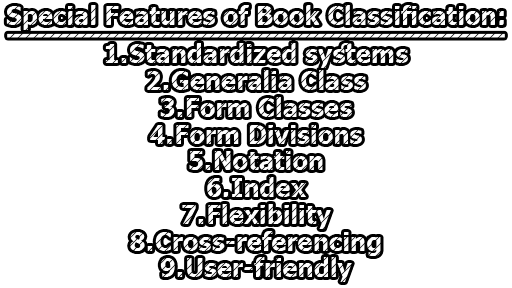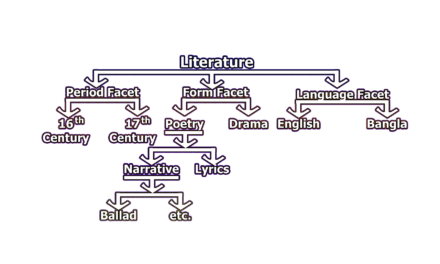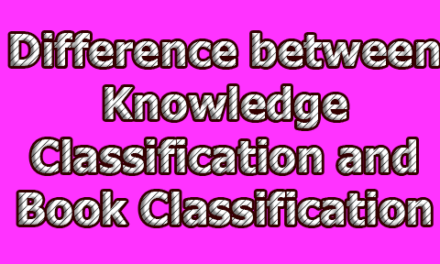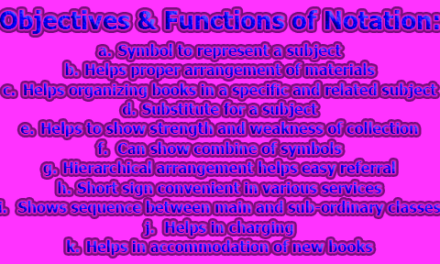Special Features of Book Classification:
Book classification is an essential aspect of organizing a library’s collection. It involves categorizing books according to specific criteria and assigning them to appropriate sections or shelves for easy access and retrieval. Here are some special features of book classification for a library:
- Standardized systems: Libraries use standardized classification systems, such as the Dewey Decimal Classification or the Library of Congress Classification, to organize their collections. These systems ensure consistency and ease of use across different libraries.
- Generalia Class: The generalia class is a category that includes all books that do not fit into any other category. These books are often referred to as “general works” or “reference works,” and they cover a wide range of subjects, from encyclopedias and dictionaries to almanacs and yearbooks. The generalia class is usually assigned the call number “A.”
- Form Classes: Form classes refer to the different types of materials that are found in a library. For example, books can be classified as fiction or non-fiction, while other materials such as periodicals, maps, and audio-visual materials are also classified separately. Form classes help to ensure that each item in the library has a unique call number that corresponds to its format.
- Form Divisions: Form divisions are subcategories within form classes. For example, the non-fiction form class may be divided into subject areas such as history, science, and literature. Within each subject area, there may be further divisions, such as biographies, travel guides, or reference works. These divisions help to make it easier for patrons to find the specific materials they need.
- Notation: Notation refers to the system of symbols and numbers used to assign call numbers to materials in a library. Different classification systems use different notation schemes, but they all aim to create a consistent and logical system for organizing books. The notation system should be easy to understand and use, even for people who are unfamiliar with the library’s classification system.
- Index: An index is a list of keywords, subjects, and names that are used to identify and locate specific items in the library’s collection. The index helps patrons to find materials quickly and easily, without having to search through the entire catalog or classification system. The index may be arranged alphabetically or by subject, and it may be available in both print and electronic formats.
- Flexibility: Classification systems are flexible and can accommodate new subjects or changes in the collection over time. New categories or subcategories can be added as needed.
- Cross-referencing: Some classification systems use cross-referencing to provide access to related materials. For example, if a user is looking for a book on a particular topic but cannot find it in the section where it should be located, they can use cross-referencing to find related materials that may be located elsewhere in the library.
- User-friendly: Book classification systems are designed to be user-friendly, making it easy for library users to locate materials quickly and efficiently. This is particularly important in busy libraries where users may be in a hurry.
Overall, book classification is a critical aspect of library organization, and a well-designed system can make it easier for library users to find and access the materials they need.

Assistant Teacher at Zinzira Pir Mohammad Pilot School and College










